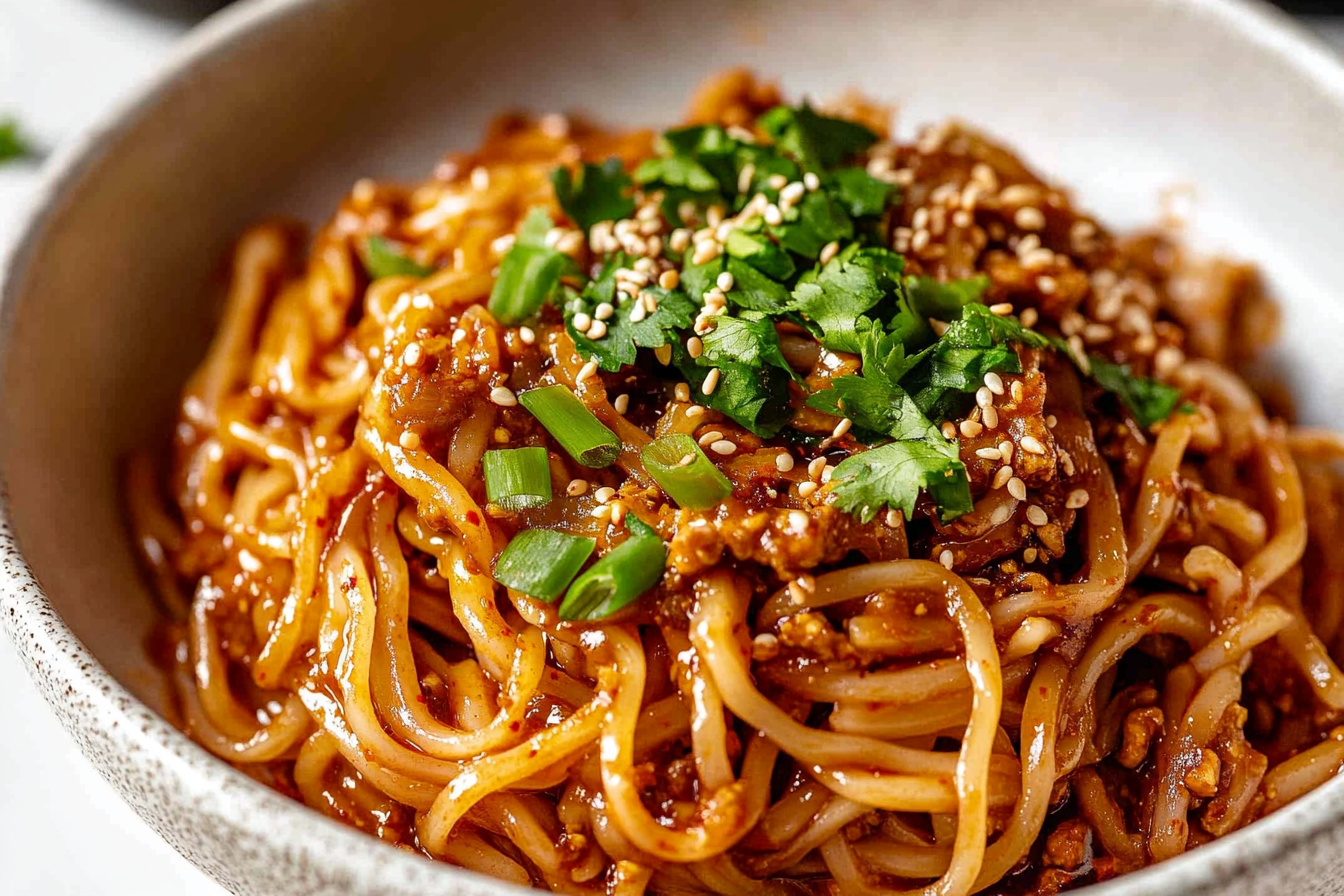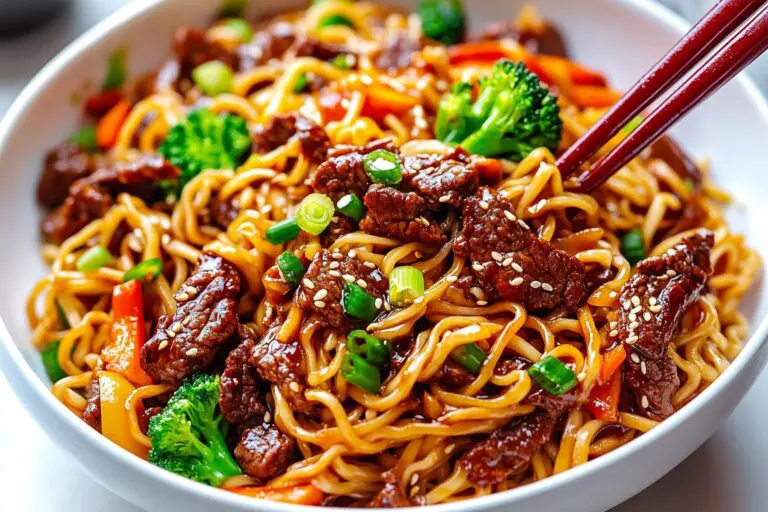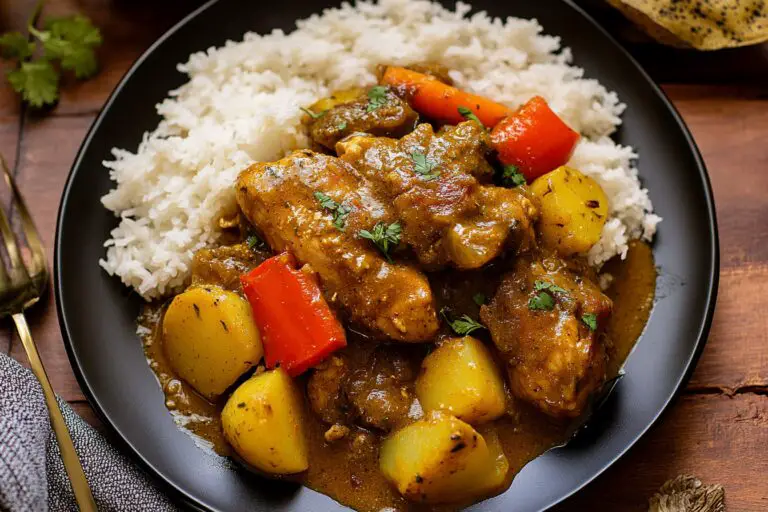Korean Gochujang Noodles
Introduction
Korean gochujang noodles are a delicious and spicy dish that combines the rich umami flavor of gochujang, a Korean chili paste, with the comforting texture of noodles. This recipe is quick and easy to make, making it perfect for busy weeknights or when you want to impress friends and family with a flavorful meal.
Detailed Ingredients with measures
Noodles: 8 ounces of your choice (udon, ramen, or rice noodles)
Gochujang: 2 tablespoons
Soy sauce: 1 tablespoon
Sesame oil: 1 tablespoon
Rice vinegar: 1 teaspoon
Honey: 1 teaspoon (or maple syrup for a vegan option)
Garlic: 3 cloves, minced
Ginger: 1 teaspoon, grated
Scallions: 2, chopped (for garnish)
Sesame seeds: 1 tablespoon (for garnish)
Prep Time
10 minutes
Cook Time, Total Time, Yield
Cook Time: 10 minutes
Total Time: 20 minutes
Yield: Serves 2-3

Detailed Directions and Instructions
Cook the Noodles
Begin by cooking your noodles according to the package instructions. Drain the noodles and set them aside once they are cooked al dente.
Prepare the Sauce
In a mixing bowl, combine gochujang, soy sauce, sesame oil, maple syrup, and rice vinegar. Whisk together until well combined.
Cook the Vegetables
In a large skillet, heat a tablespoon of oil over medium-high heat. Add sliced bell peppers, carrots, and any other desired vegetables. Sauté for about 5-7 minutes until they are tender but still crisp.
Combine Noodles and Sauce
Add the cooked noodles to the skillet with the vegetables. Pour the prepared sauce over the noodles and toss everything together until the noodles are evenly coated.
Simmer the Dish
Allow the mixture to cook for an additional 2-3 minutes, stirring occasionally to ensure that everything is heated through.
Serve and Garnish
Serve the gochujang noodles warm, garnished with scallions, sesame seeds, or any additional toppings of your choice.
Notes
Vegetable Options
Feel free to customize the vegetables according to your preference. Broccoli, zucchini, or snap peas are great alternatives.
Gochujang Adjustments
Adjust the amount of gochujang to your desired spice level. Remember that it can be quite spicy, so start with less if you prefer a milder flavor.
Storage Tips
Store any leftovers in an airtight container in the refrigerator. They can be reheated in a skillet or microwave.
Vegan Option
This recipe is naturally vegan as long as you use plant-based ingredients for the sauce and noodles.
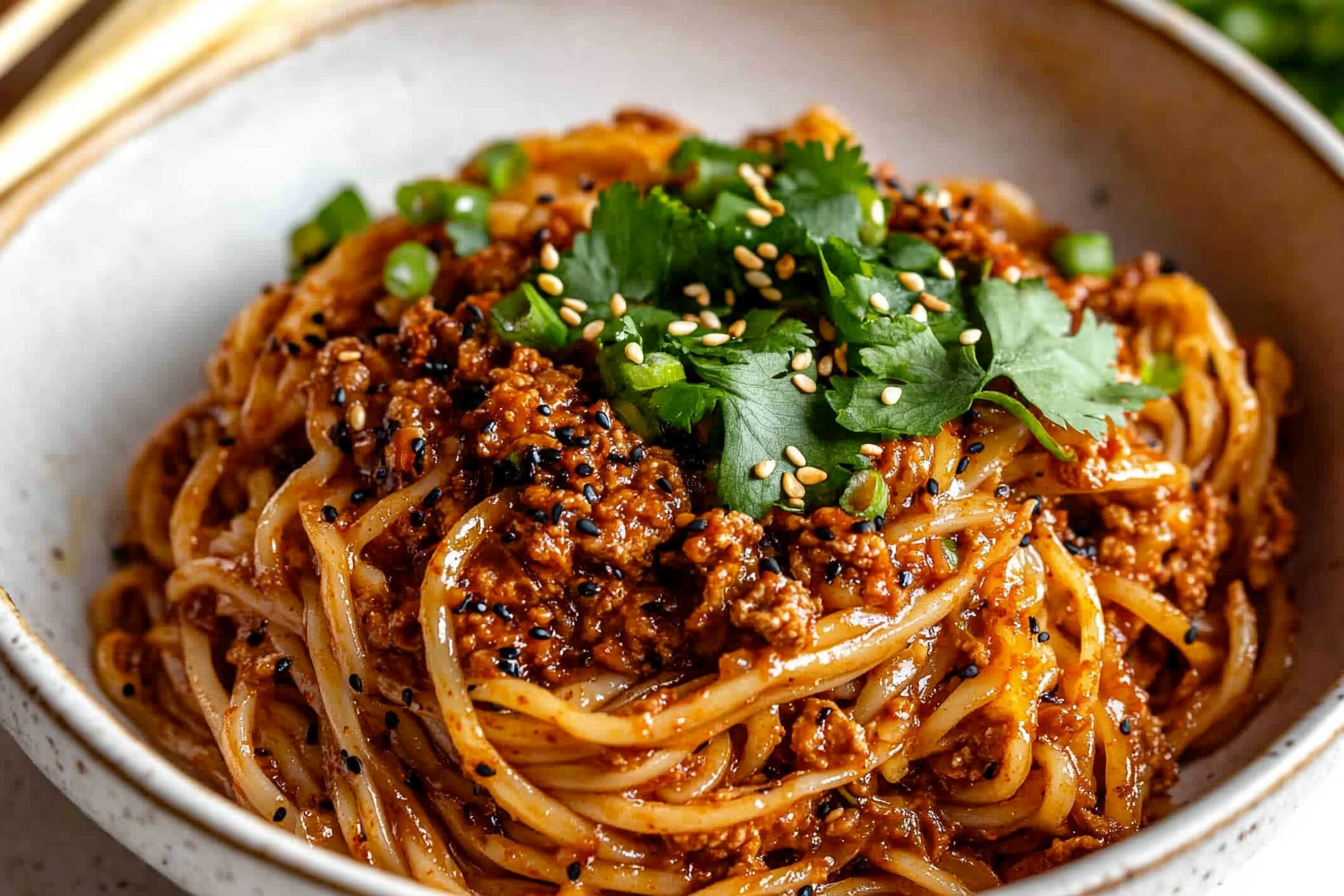
Cook techniques
Cooking Noodles
To cook the noodles properly, bring a large pot of salted water to a boil and add the noodles. Follow the package instructions for cooking time, and be sure to stir occasionally to prevent sticking. Once cooked, drain and rinse under cold water to stop the cooking process.
Making Gochujang Sauce
For a delicious gochujang sauce, mix gochujang with soy sauce, sesame oil, and any additional ingredients desired, such as sugar or garlic. Adjust the quantities according to personal taste, and whisk until the mixture is smooth.
Stir-Frying Vegetables
To stir-fry vegetables, heat a skillet or wok over medium-high heat and add a tablespoon of oil. Once hot, add your choice of sliced vegetables and sauté them for a few minutes until they are tender but still crisp.
Tossing Ingredients
After cooking the noodles and making the sauce, combine everything in the skillet or a large bowl. Use tongs or a pair of forks to toss the noodles and vegetables with the sauce until everything is well-coated.
FAQ
Can I use different types of noodles?
Yes, you can use a variety of noodles such as rice noodles, udon, or even whole wheat noodles based on your preference.
How spicy is gochujang?
Gochujang has a unique flavor profile that includes heat, sweetness, and umami. The spiciness can vary depending on the brand, but it is generally moderate.
Can I make this dish vegan?
Absolutely! You can keep it vegan by using plant-based noodles and ensuring that your soy sauce is vegan-friendly.
What vegetables work best in this recipe?
You can use a wide range of vegetables including bell peppers, carrots, zucchini, and snap peas, depending on your taste and what you have available.
How can I store leftovers?
Store leftovers in an airtight container in the refrigerator for up to 3 days. To reheat, you can use a microwave or heat it in a pan with a splash of water to add moisture.
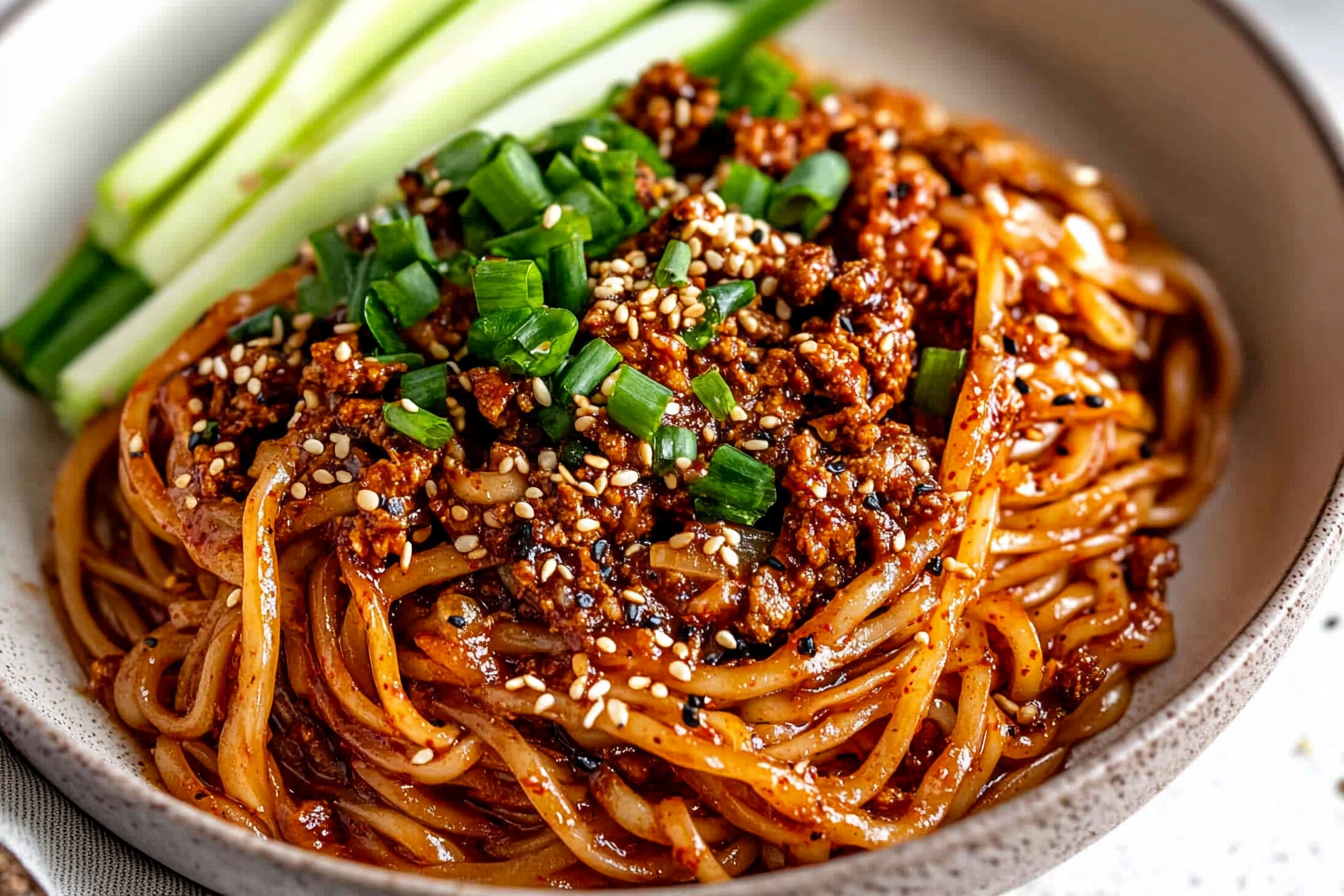
Conclusion
The Korean Gochujang Noodles offer a perfect balance of spicy, savory, and umami flavors that make for a delightful meal. This dish is not only quick to prepare but also versatile, allowing you to customize it to your taste. Whether you are looking for a comforting weeknight dinner or a flavorful lunch option, these noodles can satisfy your cravings while introducing you to the vibrant essence of Korean cuisine.
More recipes suggestions and combination
Vegetable Stir-Fry
Enhance your gochujang noodles with a colorful mix of your favorite vegetables such as bell peppers, broccoli, and carrots stir-fried to perfection.
Gochujang Chicken
Pair your noodles with gochujang marinated grilled chicken for a protein-packed meal that complements the spicy noodles beautifully.
Tofu and Spinach
Add sautéed tofu and fresh spinach for a plant-based option that adds both texture and nutrition to your dish.
Kimchi Side Dish
Serve a side of kimchi for an authentic touch; the fermented flavors will enhance your eating experience with every bite.
Spicy Shrimp
Top your noodles with spicy shrimp for a seafood twist that will elevate the flavor profile while keeping the dish light and delicious.
Soft Boiled Eggs
Adding a soft-boiled egg provides creaminess and richness, making each bite indulgent and satisfying.
Peanut Sauce Drizzle
For a nutty flavor, drizzle some peanut sauce over your gochujang noodles, which will beautifully blend with the spice.
Cilantro and Lime
Finishing with fresh cilantro and a splash of lime juice can brighten up the dish, adding freshness and depth to the flavor.

